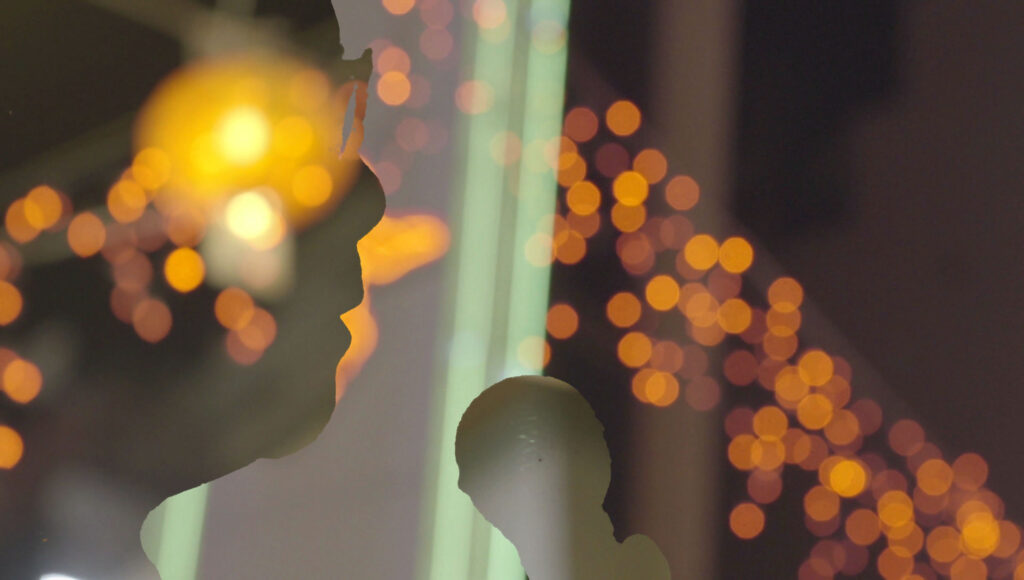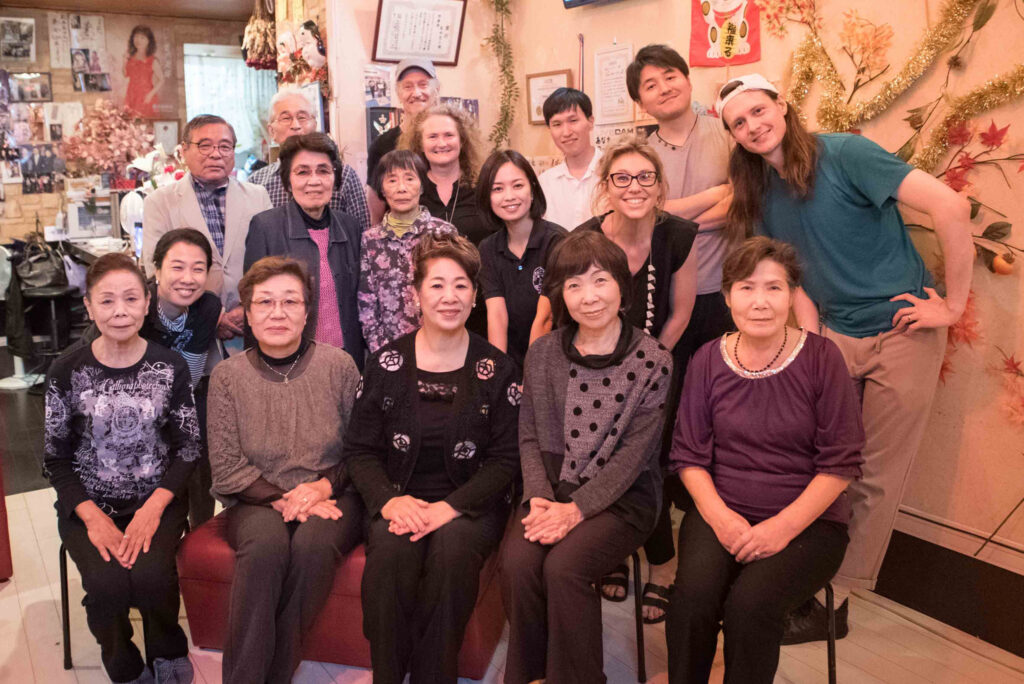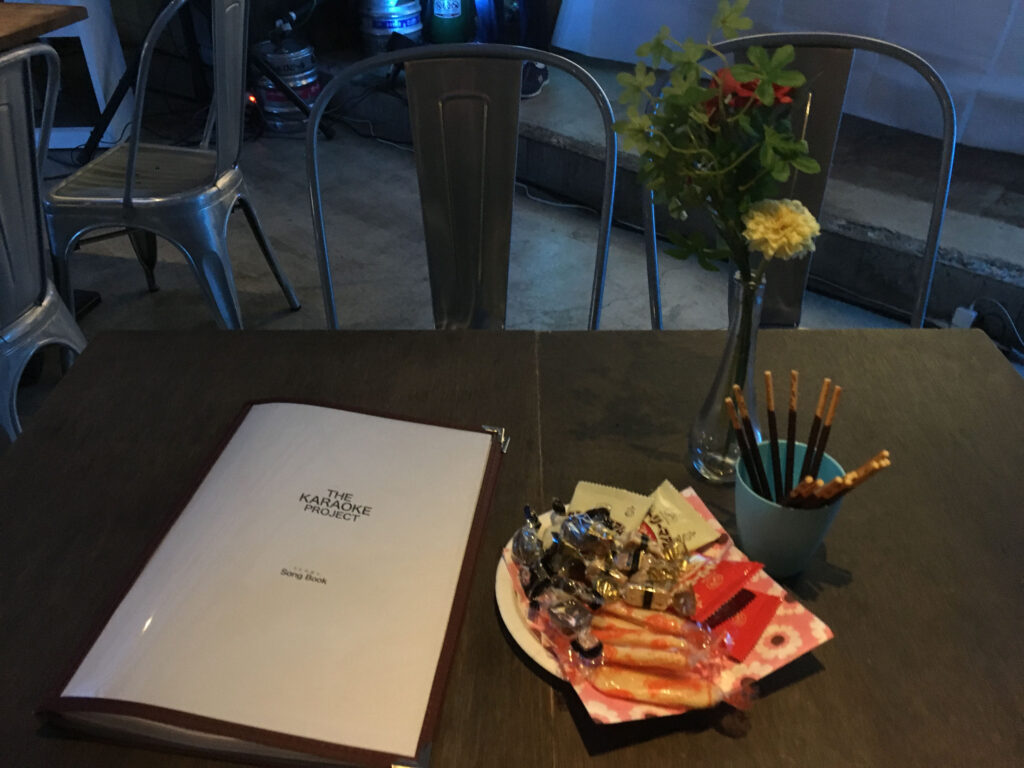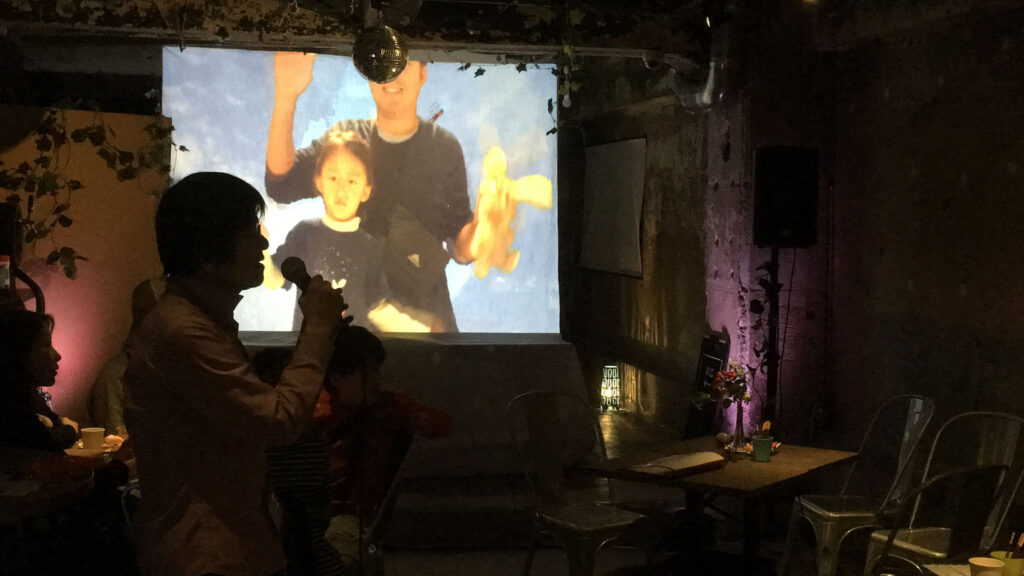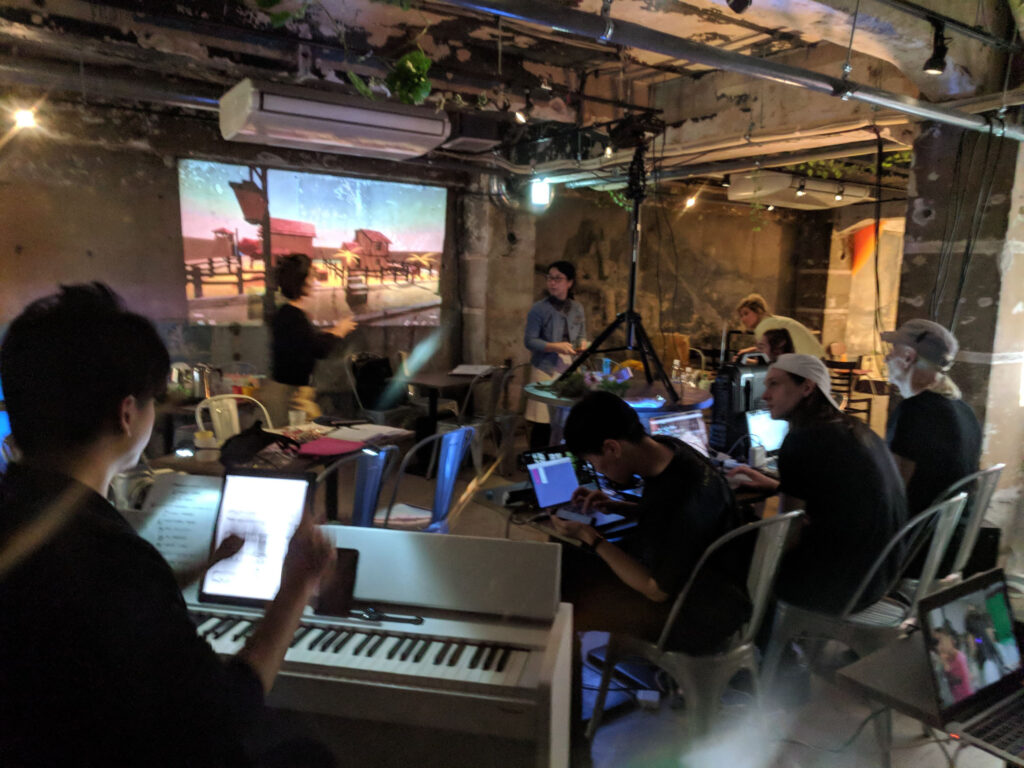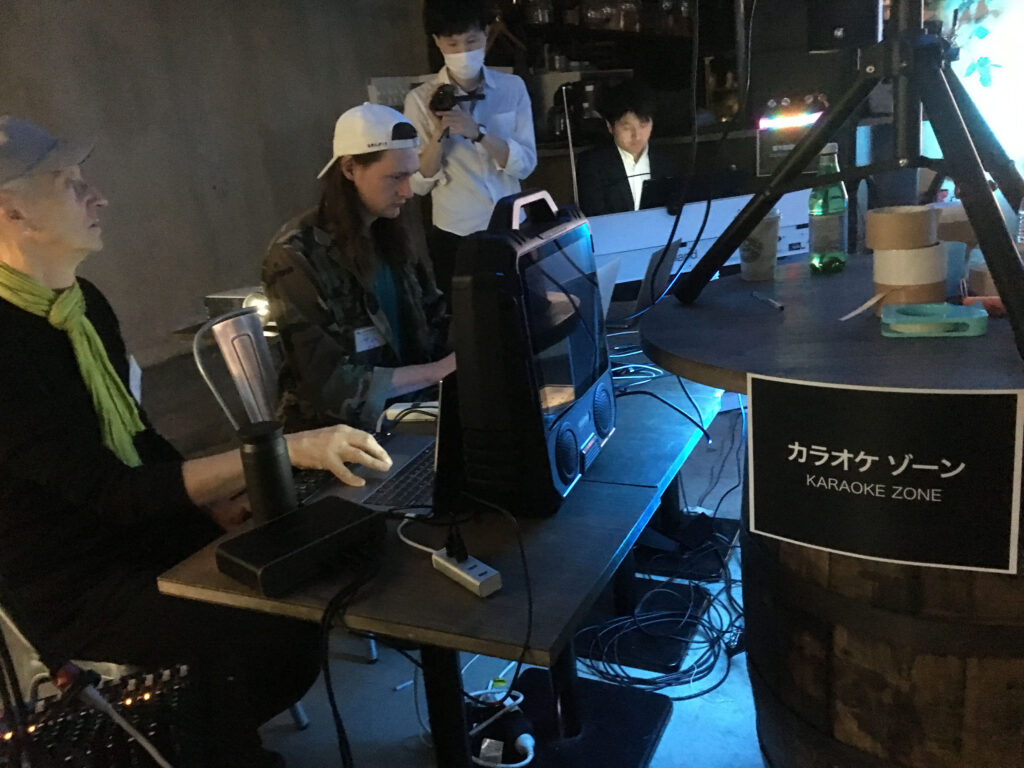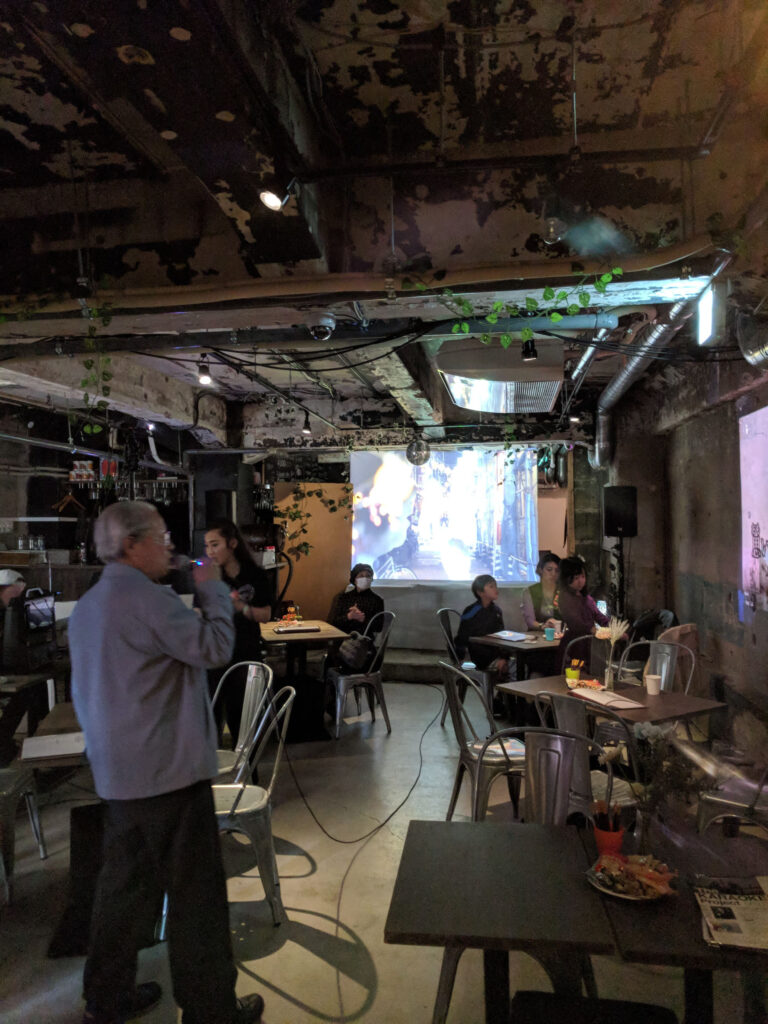The mode of Real-Time Media emerged in Turbulence as a cross-pollination of live and digital practices. It is a means of bringing the unpredictability and performativity of liveness to digital materials by manipulating digital material in Real-Time.
In hybrid performance contexts, there is an imbalance between how we perceive digital and live elements. Performance studies research Philip Auslander argues that we do not perceive creative work in a vacuum, rather in our specific socio-cultural context. Today’s culture is dominated by digital experiences and so in hybrid digital/live work, the live can be subsumed into the digital. The mode of Real-Time Media was used in Turbulence to bring the digital “under the thumb” (Hodkinson) of the performer, and so helped to redress this imbalance.
Niche
I came to Auslander through a creative practice encounter of this imbalance between live and digital elements. As a part of my documentation practice, I was brought on board as audio-visual coordinator for Elbow Room’s production of Niche in August 2017, presented through Darebin Speakeasy at the Northcote Town Hall. Throughout the performance, there were video sequences imitating YouTube channels, where the action moved from the stage onto a projection screen above the performers. During the rehearsal process of this production, the video content and performers coexisted in the space. However, the tendency as a viewer was to be sucked into the screen and ignore the performers, and so the sequences were separated. This phenomenon was described by Phillip Auslander in his article Liveness, Mediatization and Intermedial Performance, in which he argued that culturally dominant media subsumes other performative forms in hybrid works:
“We now experience such work in terms of fusion, not con-fusion, a fusion that we see as taking place within an essentially televisual digital environment that incorporates both live and recorded elements indiscriminately as raw materials. […] both the live and digital elements are assimilated to the dominant medium, which is the digital. In that sense, the equation turns out to be: Dance + Virtual = Virtual
(Auslander “Liveness, Mediatization, and Intermedial Performance”)
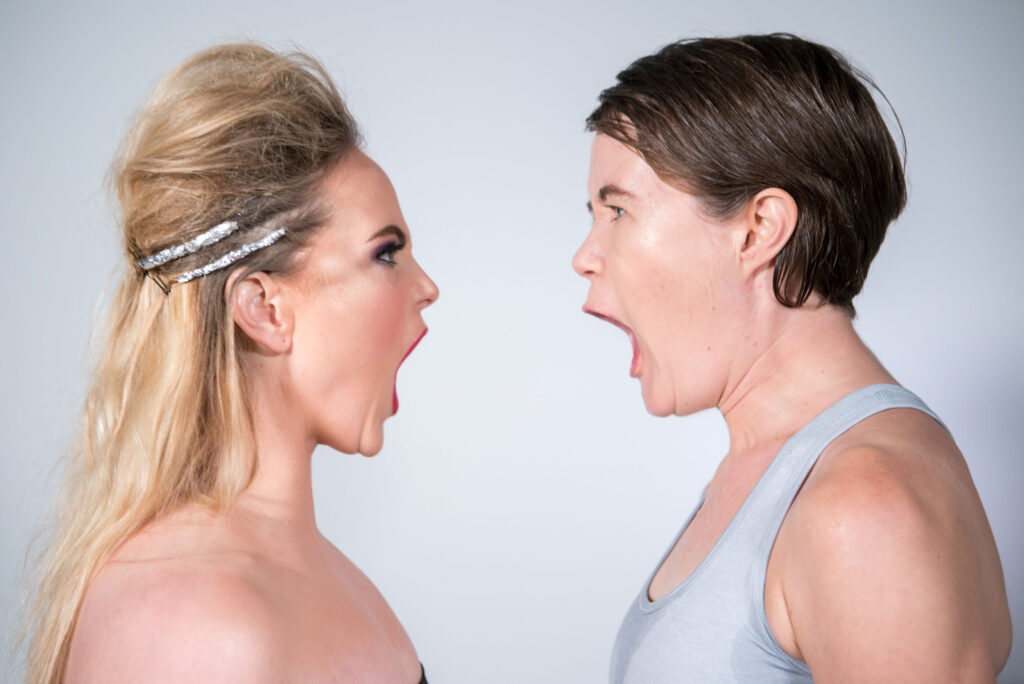
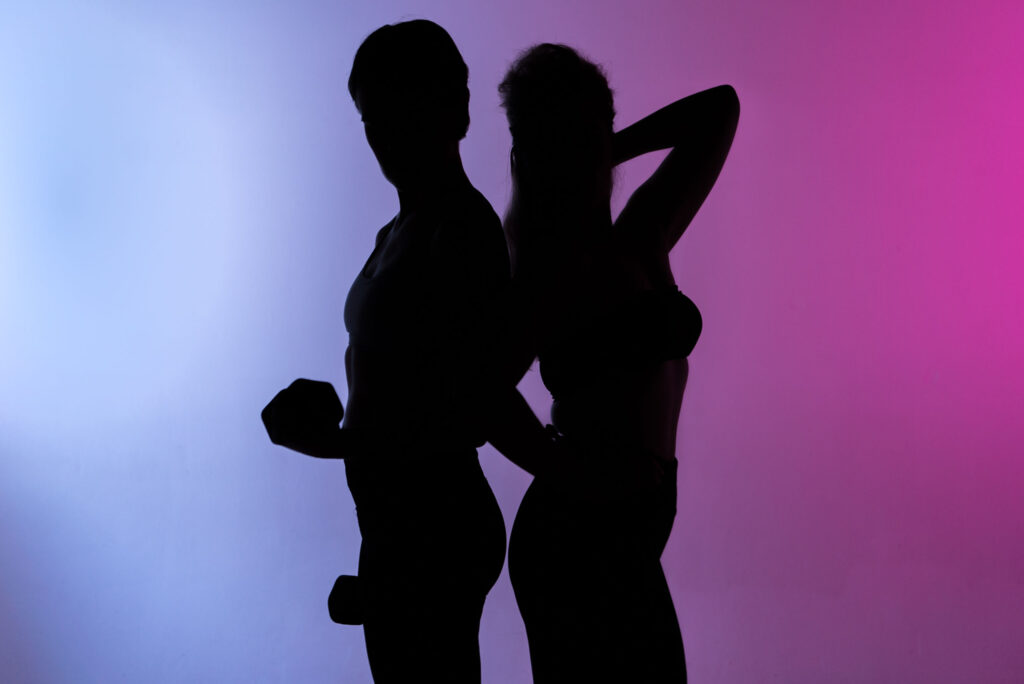
Real-time Media in Turbulence
Real-time Media operation was used in Turbulence as a way of bringing the liveness of performance into digital elements of the hybrid work at Agile Chambers. Peter Humble triggered the text libretto, responding to timings from soprano Deborah Kaiser. Humble talked about wanting to bring this element of live practice into his media.
“If we are going to do this live kind of version with the film, it sort of makes sense for me to be live as well”
(Humble)
This development was informed by a forgotten libretto instruction in the original work that was rediscovered by Humble: “any phrase can be repeated”. Kaiser also triggered Humble’s footage remotely during her performance. Hodkinson describes that:
“having a singer halt and trigger the film at will, which necessarily implies subjecting decisions about the timing and pace of such interventions to a musical sensitivity, brings the visual image under the finger of the song”
(Hodkinson)
Giving over of power to the performer was a further means of redressing the imbalance of audience attention between digital and live elements discussed above.
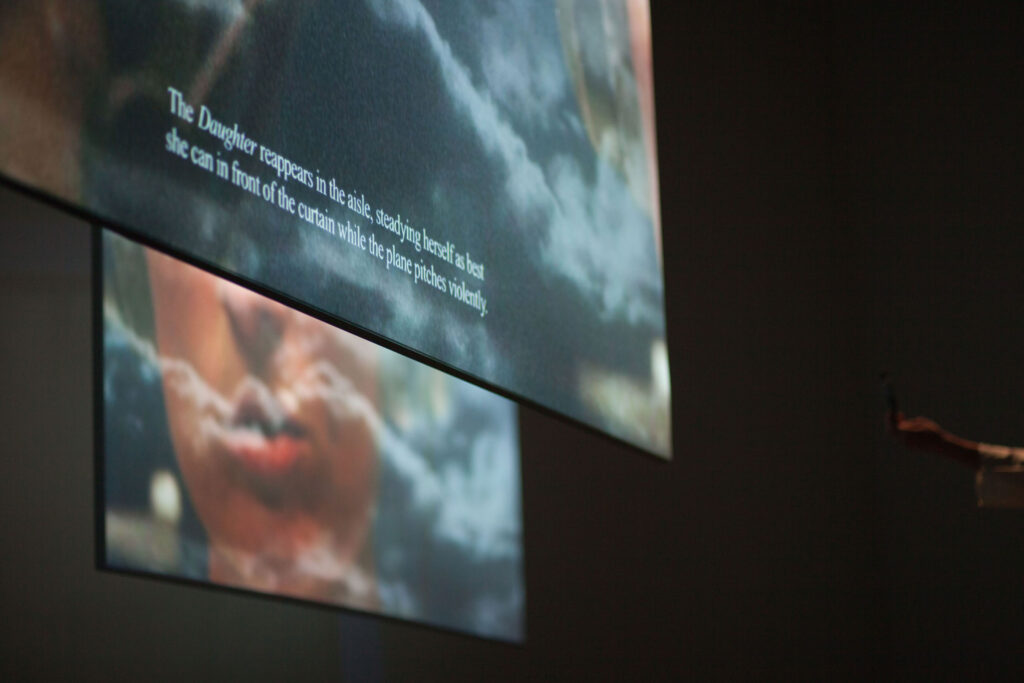
The Karaoke Project
In my practice, I negotiated the balance of live and digital elements through real-time media in The Karaoke Project, a live art installation in which I ‘performed’ recorded media, mixing it in real-time. I discuss how the Karaoke Project developed as a collaboratively devised hybrid work, in which media and context brought about a space for human connection and exchange. In this work, audience and artists were co-located in an intimate space, allowing artists operating in both digital and live modes to connect with audience directly.
The Karaoke Project came out of a meeting at the Tokyo Performing Arts Market in March 2018 and was held in November 2018 in Yokohama. It was a collaboration between Australian artists and Japanese theatre makers Acchi Kocchi. The Australian team comprises of dancer/choreographer Yuiko Masukawa, sound artists Madeleine Flynn and Tim Humphrey, theatre-maker Alex Walker and myself.
In Japan, karaoke is an affordable social activity enjoyed by all ages, but usually in the context of their own friends. Young people will go to private karaoke booths with friends, while elders frequent “snack” bars where a host can operate the machines for them as well as providing a food and drink service. Our intention was to create a situation for intergenerational exchange by bringing age groups together, inviting them to sing and designing a space filled with the creative offers of diverse ages.
We were concerned that participants would be hesitant to sing in front of others. Understanding Auslander’s description of how media has disproportionate weight against live performance, I used the single screen as an attention deflector. This attention pulling effect was compounded by audience seeing their own image on the screens. In this way, we made the experience of singing in front of others less intimidating.
Compositionally, there were three layers of images in the live karaoke videos, backgrounds; masked textures and foreground elements. The layers of video material I used to create them were: local landscapes and textures; devised and impromptu choreography recorded at through workshops and in an elder’s karaoke bar; and live recordings against a green screen at the Cave. All of the material sought to create a human space, grounded in Yokohama. Landscapes and textures were the base layer, over which other material was laid. Through them I deconstructed the tacky sentimentality of karaoke videos, incorporating night-time cityscapes and romantic ocean views. These images were familiar to the local audience, and helped locate the imagery in the community.
